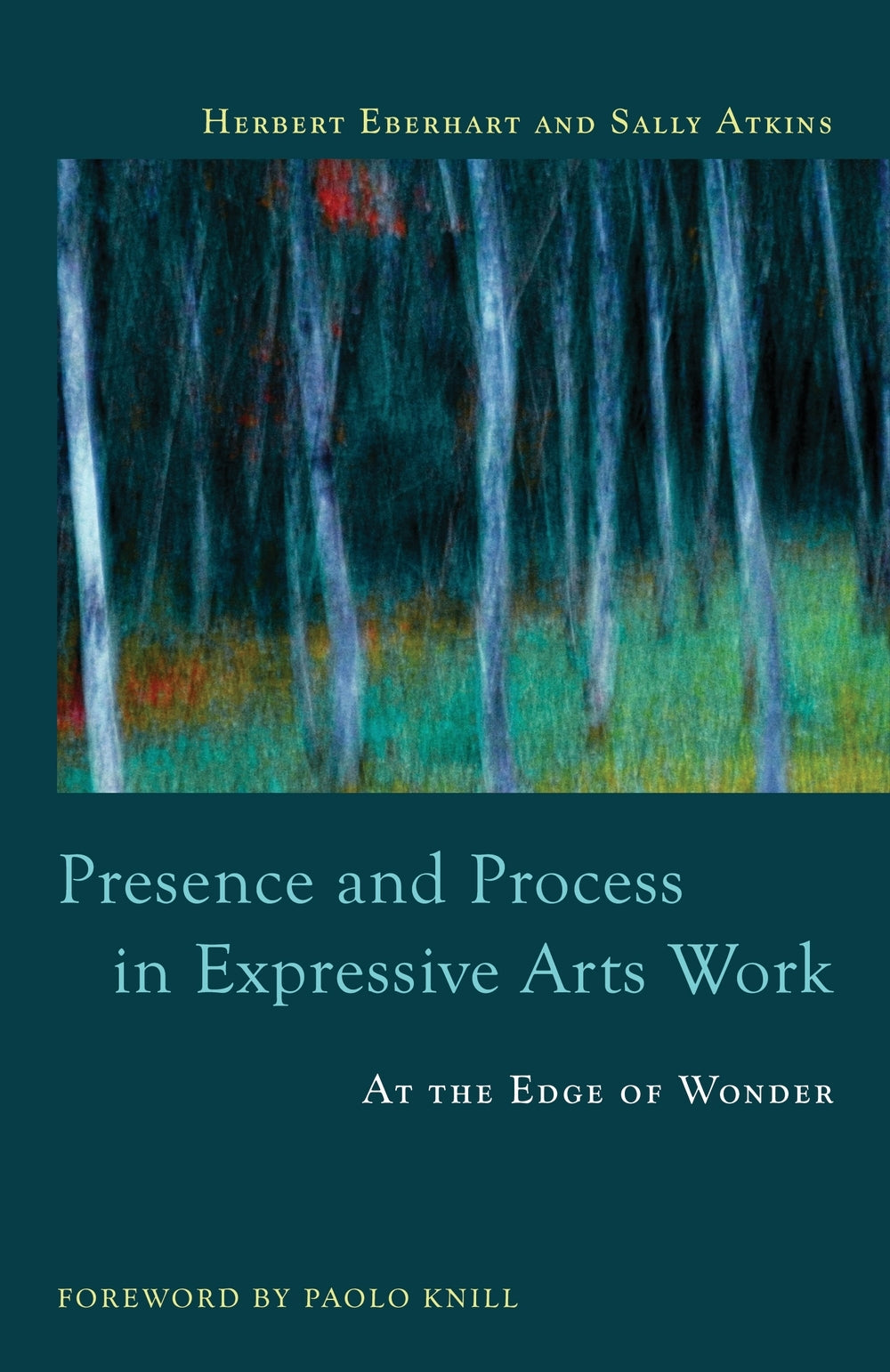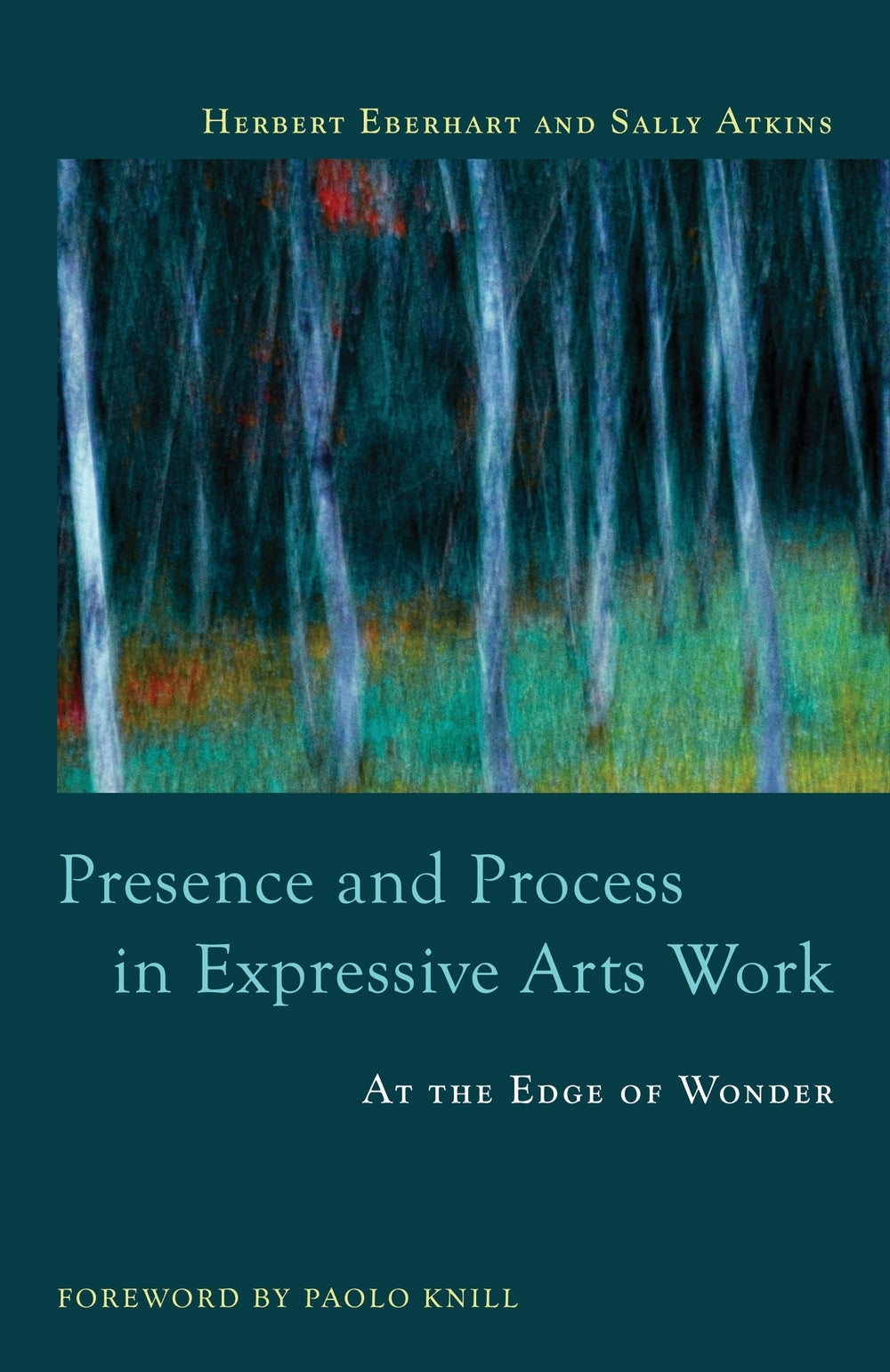
Press Reviews
from the foreword by Paolo J. Knill, Ph.D., Provost of the European Graduate School, Professor Emeritus at Lesley University in Cambridge, MA, and an internationally recognized leader and founder of Expressive Arts
“This is a major contribution to the field of expressive arts, a pioneering work, bringing together these central concepts, presence and process, with fundamental ideas about the arts and aesthetics.”
Shaun McNiff, University Professor and founder of the first expressive arts therapy program at Lesley University, Cambridge, Massachusetts
“Herbert Eberhart's and Sally Atkins's terse and wise book reveals why the worldwide community of the European Graduate School leads the way in applying ideas and methods originally developed in expressive arts therapy to a spectrum of practice ranging from organizational development to social change. Their teamwork models the presence, process, and wonder of creation.”
Harold McKinney, DA, Trombonist, Professor Emeritus of Music, Appalachian State University, Founding member of the Appalachian Expressive Arts Collective, Director of Gypsy Harvest Annex International Improvisational Performing Ensemble
“Atkins and Eberhart have confronted the essential quandary of 21st-century life 'ordered by routines and plans even if the plans don't work'.As our world constricts further, seeking greater efficiency in its planning, these two visionaries dare to explore the wisdom of curiosity, wonder, and imagination kindled through art, improvisation, and openness to surprise. That which is offered here moves past the studio to permeate their clients' and students' worlds with aesthetic sensitivity and responsibility. Beautiful!”
Dr. Jürgen Kriz, Professor Emeritus, Osnabrück University, Germany
“This book by Sally Atkins and Herbert Eberhart offers a unique combination of explanatory discourse, personal experience and practical examples concerning the question: what are the helping effects when carrying out expressive arts work in psychotherapy, counseling, coaching, supervision, etc.? For a long time, students as well as practitioners have been yearning for such a book, because they are increasingly asked to describe and explain the principles of their doing. Congratulations for supplying this need, now!”
Stephen K. Levine, The European Graduate School
Presence and Process in Expressive Arts Work is a deceptively simple book. It can be easily understood by beginners in the field, yet at the same time it may very well deepen the understanding of experienced practitioners. The interconnection of the two major concepts is presented in a clear yet profound way, and their relevance to expressive arts work is convincingly presented. My own understanding of the field has been deepened considerably, and my belief in its importance has also been strengthened. Most importantly, the book has helped me remember that our work happens 'at the edge of wonder,' that we all have the potential to find hope and joy in the presence of the world and of others.
Play Therapy
This book explains the process between the therapist, client and any additional tools within the range of expressive arts as part of a session... The appendix contains two practical examples of how presence and process are used... I read the book several times... I highly recommend it as a stimulating read.
